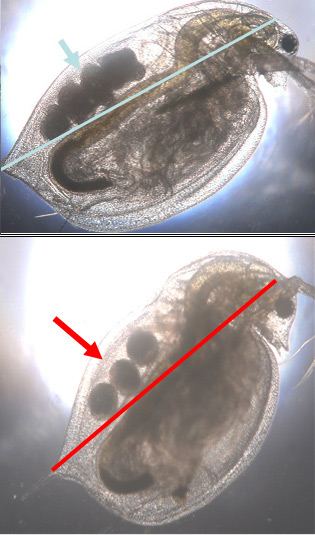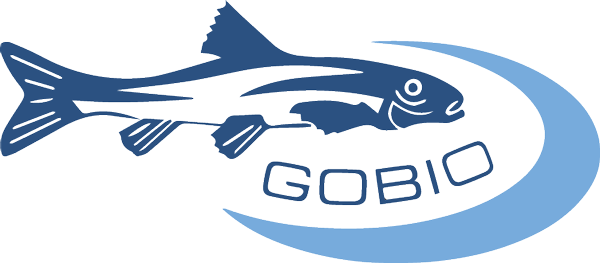Daphnia test (determination of acute toxicity for water fleas)
a) Acute test
The Daphnia test is used to determine the non-acute toxic effect of wastewater on small crustaceans in accordance with DIN ISO 38412-L30 1991-03.
Daphnia magna is used as the test organism.
Young animals aged between 2h and 26h are exposed to wastewater of various dilution levels. After 24 hours of exposure, the test organisms are tested for loss of buoyancy.
The Daphnia test is the basis for substance assessment under the Chemicals Act, the Plant Protection Act and the Water Resources Act.
b) 21-day Daphnia test (long-term Daphnia test)
In this test, the reproductive toxicity of aquatic substances on Daphnia is determined according to OECD Guideline 211.
Daphnia magna is also used as the test organism here.
After the dams have been exposed to the non-acutely toxic dilution level, the number of offspring per dam is determined. Exposure begins with 2h to max. 26h old Daphnia and lasts 21 days.
The number of offspring, the number of embryos in the gross pouch and the growth of the surviving dams compared to the control are determined.

OECD Guideline 211
This method is suitable for predicting damage that is only triggered by prolonged exposure. The test also detects impairments that develop gradually, such as inhibition of growth or reproduction. The test detects the risk to the organisms tested (filter-feeding small crustaceans) and their biological functions in the ecosystem (e.g. control of aquatic blooms of unicellular algae). The test also provides information on bioaccumulation processes that lead to pollutants accumulating in organisms and being spread via the food chain.
